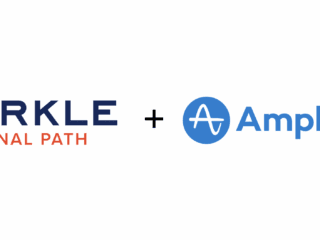How would Government decision-making, policy development and program delivery be impacted if in-depth information of citizen needs, interests and actions was easily available in near real-time? How might spending priorities be aligned if there was a direct, continual and accurate means to understand and gauge public use of any Government service, program or information without recourse to polls and/or focus groups?
We believe that if Government executives and managers knew that they could get access to high quality, timely, granular and low-cost intelligence on how citizens engage with departments and Agencies, they’d want that information right now.
The fact is they have it. It’s at their fingertips. It’s called digital analytics, or web analytics. Unfortunately, it’s buried in thick reports full of numbers, graphs and data, typically lacking insight, context and value. Managers should demand more – because getting this insight has never been more crucial. Let me explain.
Analytics clears a path…
The US, Canada, Australia, Europe – governments worldwide are facing many years of fiscal restraint and budget cuts. Government managers are being given the hard task of pruning expenses and finding cost savings, all while trying to minimize the impact on service and program delivery. All this within a backdrop of interests groups demanding their pet program be spared, a media that makes personal every hardship that cuts impose, and an internal decision making process that is by definition politicized. Not to mention mandated programs which consume the bulk of budgets in most governments.
These are among the most difficult of circumstances in which to make decisions. We understand how tough it is to operate in this environment of competing agendas and priorities. Finding a pathway through the decision-making swamp is tough, and we believe that one tool that is being underused – and could help to clear a path – is web analytics. Analytics can deliver visibility into what citizens value, an understanding of what outcomes are achieved, and the ability to tie all this information back to program costs. Unfortunately, the insight available from web analytics is not being maximized: too many organizations are still measuring success based on simple metrics like the number of visits or page views. Tom Davenport, a highly respected professor of management at Babson College in the US explores how analytics help make organizations more effective and strategic. His research demonstrates the multiple benefits that accrue across the enterprise when there is visibility into the operations delivered by robust, accurate and objective analytic data. The promise for governments is equally compelling.
Why you should care about web analytics?
In 2010, the number one touch point between governments and their citizens is online (web, email, social networks, mobile, RSS, etc.). The volume of interactions online – regardless of their nature – is exponentially larger than any other communications channel (phone, kiosk or service centers, mail, etc.). This is a fact. In the “Age of Search” and the “Era of Intent”, citizens can easily locate all relevant information about any government program, service, offering, or contact. Every aspect of a visit online is fully and completely measurable. Think about this: you can understand intent, evaluate uptake/understanding, map the geography of interest, assess outcomes and tie this back directly to program inputs and costs. All without having to commission a single poll, focus group, evaluation or other research process that takes weeks or months to execute, comes at great cost and can be difficult to get approved.
Web analytics are revolutionizing the way the private and non-profit sectors are speaking to their audiences by enabling them to create detailed portraits of each consumer, and helping them to generate involved “conversations” in which value is exchanged between both parties. And all this can be done while respecting the users’ desire for anonymity as well as their right to privacy.
The good news is that some public sector organizations are making great strides in their online measurement initiatives and in the process, using analytics to test and fine tune messaging. Others have moved beyond measuring activities to evaluating impacts and outcomes – all based on key performance indicators driven by analytics data. So what are some of the innovative and best practices? These and other analytics, measurement and evaluation questions are what we’ll be exploring over the course of a series of upcoming blog posts designed specifically for public sector managers. Feel free to comment or drop me a line (Twitter: @alangshur; email: alangshur at publicinsite dot com) if you have a question or perspective you want to share.
PublicInsite Web Analytics Inc.
Contact us to learn more about what Cardinal Path can do for you.













